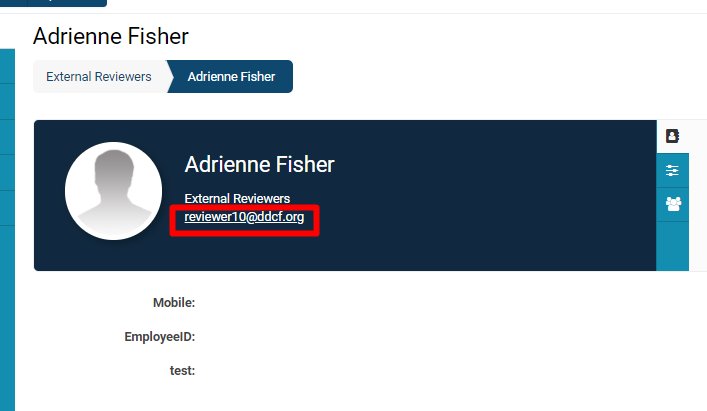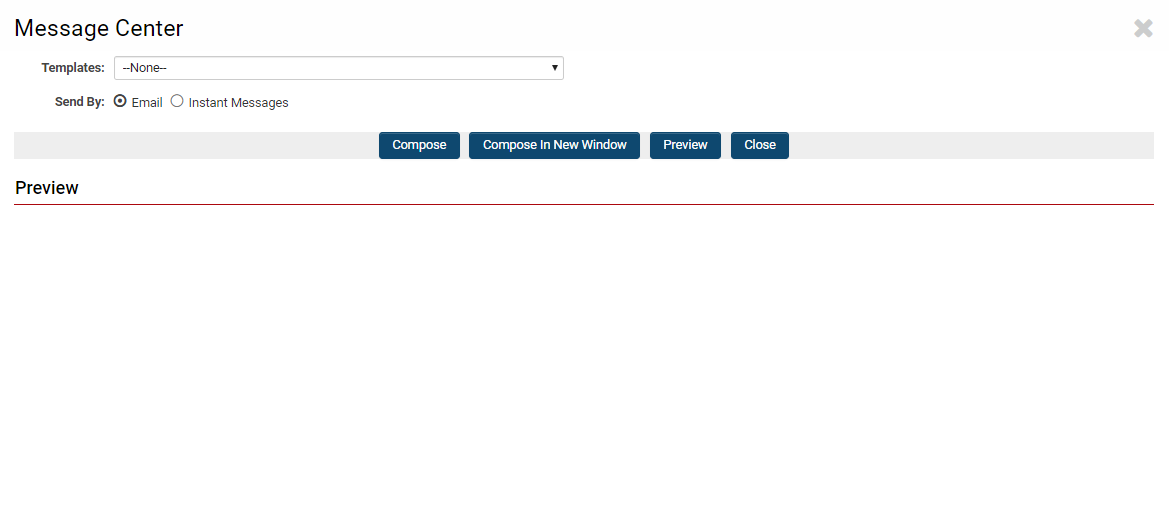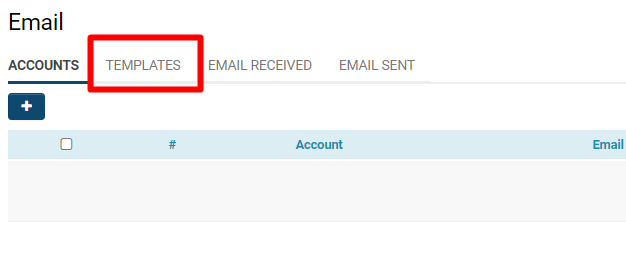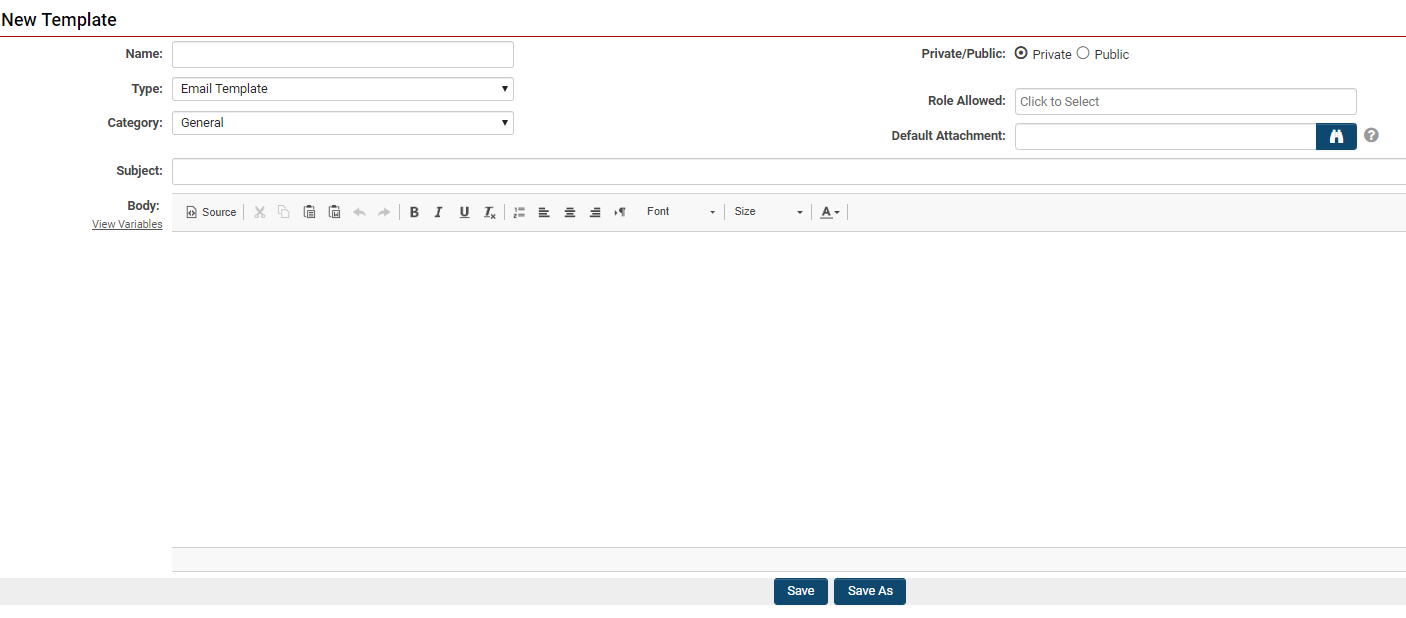Difference between revisions of "Email"
| Line 172: | Line 172: | ||
===Message Template Example with Variables=== | ===Message Template Example with Variables=== | ||
=Configuration - Advanced= | =Configuration - Advanced= | ||
| + | ==Feature: Email Anything== | ||
| + | With the '''Email Anything '''feature, you have the ability to generate unique email addresses tied to various objects or records. This adds the convenience of attaching emails directly to the relevant object or record. | ||
| + | |||
| + | '''Email Anything '''ensures that all claimants' or applicants' emails are tracked and stored in their own unique record and assigned email address - this eliminates lost or misplaced communications coming into a larger, communal email inbox. | ||
| + | |||
| + | <u>'''Some functions of Email Anything: '''</u> | ||
| + | |||
| + | * You can configure the '''Email Anything '''feature so that when your external users send an email to a record, a '''sub-record '''is created on that record. | ||
| + | * Emails sent to an organization record can also create contact records in the system. | ||
| + | * Emails sent to a {{UTA}} record can create an '''activity '''on that record; users are then able to interact with and create records on your online database without even logging in. | ||
| + | * The system will automatically record all incoming and outgoing activity on the source record so all communications are properly tracked. | ||
| + | |||
| + | <pre> This feature is also searched as the following: Objemail, eMail Everything, object email, @objemail@ </pre> | ||
| + | |||
| + | |||
=Appendix= | =Appendix= | ||
Revision as of 13:17, 19 June 2019
Overview
Email Access is provided within SmartSimple from two different features. Regardless of which technique you use, you are always able to store incoming emails with the contact that sent the messages, provided that contact exists within your SmartSimple system. Contact activities include all emails as well as other types of activities. When you save an email address to a specific contact, it will become visible to anyone who has access to view that contact.
- See here to learn how to add users and contacts.
Accessing Email from the Menu
1. Click the 9-square menu icon on the top right of your page.
2. Under the Communications heading, select Email.
3. The Email feature will open.
-
- See Email Menu Options for more information about the functionality of the Email feature.
Accessing Email through Message Center
The second method of accessing email is through the Message Center. When you click on any person's email address, regardless of the application or feature you are using (such as by viewing their profile), you will launch the Message Center which allows you to compose and send an email message.
- See Creating a New Email from the Message Center for more information on how to create and send an email through this method.
Types of Email Services
- You can access email accounts in SmartSimple provided the type of account is either POP3 or IMAP.
- You cannot access other types of email services that are not configured to operate as POP3 or IMAP.
- The accounts you wish to access must have been previously established with some other service.
- SmartSimple does not provide an email server; however, you can send emails from within SmartSimple if your email service is unavailable.
For more help about email services, contact the SmartSimple Support Desk.
Configuration - Essentials
Email Menu Options
| Accounts | |
| Templates | |
| Email Received | |
| Email Sent | |
| Standard Fields on List View |
The Message Center
The Message center is used to display pre-defined message templates in order to simplify the creation of an email message, and to streamline the emailing process. You can make email templates available to certain roles or create your personalized, user-specific signature to append to your emails.
Creating a New Email from the Message Center
By following method 2 of accessing Email functionality - directly clicking a contact's email address from somewhere in the system - a modal window of the Message Center will pop up, allowing you to create and send an email to that contact.
For example, you can access a contact by finding them from the People list, found under the Organizations heading in the main menu (accessed via the 9-square menu icon on the top right of your page).
The contact's email address will appear on their profile.
Clicking directly on their email address will allow a modal window of the Message Center to pop up.
Your first option is to choose a Template from a drop-down of available Message Templates in the system that your role has permission to use. This article will provide instructions for Creating a New Message Template later on.
Your next option is to either send by email or Instant Message, another communications feature within SmartSimple that can be accessed from the main menu.
After confirming those options, you can then click on your next step:
- Compose: Clicking the Compose button will bring you to a new email page within the same modal window. The new email page looks similar to what you would see in Microsoft Outlook or Gmail.
- If you do not select a template, this page will appear with all fields blank except for the To field, which will be populated with the email address of the contact whose email you clicked.
- If you do select a template, any features that have been created in the Message Template will already be displayed.
- No matter the template, you can still modify your body content via the menu in the body text window, which allows changes to such features as font weight, etc.
- Compose in New Window: Clicking this button will have the same functionality as the Compose button except that the page will appear as a new window. This window can then be moved around, minimized, or closed to allow you to continually see and use other SmartSimple functions.
- Preview: Clicking the Preview button will generate a preview depending on the Template that you have chosen. The preview will be generated at the bottom half of the modal window of the Message Center, under the heading Preview.
- Close: Click this button to close the Message Center.
Accessing the Message Center
1. Click the 9-square menu icon on the top right of your page.
2. Under the heading Communications, select Email.
3. Click into the second tab labelled Templates.
Any templates that are already available to the system will be listed. Click the pencil icon on the left of the name of the template if you would like to edit that specific template.
Creating a New Message Template
When you have opened into the list of message templates, you are able to create a new message template.
1. Click the + icon on the top left, above the list of templates.
2. Fill out the form fields to create a new email template.
| Name | Message template name as it will appear on the template list. | |
| Type |
Two types are available: Email Template and Email Signature. Each user can have an Email Signature that will be automatically appended to the bottom of each message that they create. | |
| Category |
You can select from one of the following options:
| |
| Private/Public | If you are in a role with manager permissions to create global templates, you are able to use this option to create a template that can be used by everyone in the organization. This option is not visible to users who do not have this manager permission and are creating an Email Template. | |
| Role Allowed |
Click into the text box to select from available system roles to determine who is allowed to use this Email Template. Ex: People with Staff roles can have the ability to use an Email Template designed specifically for internal staff. | |
| Subject |
The subject line of the Email Template will appear here. Ex: You can create an Email Template for acceptances of grant applications; these might all have the same subject line, "Grant Approved." | |
| Default Attachment |
If you would like to add an attachment that is always included with this Email Template, you can click the binocular icon to look up and select the files here. Note: The available file options must first be uploaded into SmartFolders or Configuration Folders, also found in the SmartFolders feature. | |
| Body |
The body of the message can be typed here. All types of formatting are supported - you are able to copy and paste information from other programs, including images, into the body window. View Variables - Click this option to see from a list of system-wide variables. These will be autopopulated with the appropriate text based on the recipients. For example, @GrantID@ will autopopulate with the specific grant ID number if you are sending it to the grant recipients from a Level 1
Font/Content Modification - Utilize the menu options available in the body text window to modify the content of your email. For example, you can change the font weight (bold or not) and size, as well as formatting of columns and indents. |
Creating a Signature Template
A signature template is used to add your user-specific, personalized signature to the bottom of the email messages that you send.
1. Click the New Template tab from the Email page.
2. Change the Template Type to Email Signature.
3. Set the Name field to My Signature.
4. Add the Signature to the body text window. You are able to modify and personalize your signature as you please.
5. Once you are done, click Save.
Note: The Save As button is for when you create a template for the first time. Clicking this will enable a pop-up that prompts you to put in the Template Name so that it can be saved into the system. Otherwise, clicking Save will suffice when you are making changes to an already existing template.
Message Template Example with Variables
Configuration - Advanced
Feature: Email Anything
With the Email Anything feature, you have the ability to generate unique email addresses tied to various objects or records. This adds the convenience of attaching emails directly to the relevant object or record.
Email Anything ensures that all claimants' or applicants' emails are tracked and stored in their own unique record and assigned email address - this eliminates lost or misplaced communications coming into a larger, communal email inbox.
Some functions of Email Anything:
- You can configure the Email Anything feature so that when your external users send an email to a record, a sub-record is created on that record.
- Emails sent to an organization record can also create contact records in the system.
- Emails sent to a record can create an activity on that record; users are then able to interact with and create records on your online database without even logging in.
- The system will automatically record all incoming and outgoing activity on the source record so all communications are properly tracked.
This feature is also searched as the following: Objemail, eMail Everything, object email, @objemail@





